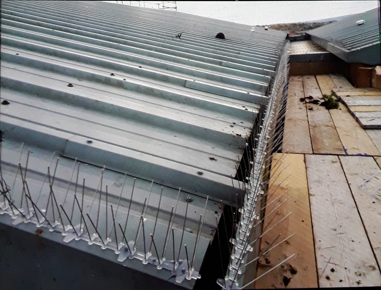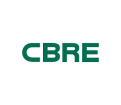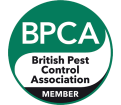
Call 0333 567 2020 for advice and quotes or contact us online
Bird control: useful tips to prevent unwanted bird infestations
Bird control is an important aspect of pest management for many property owners, as birds can cause damage to buildings, spread diseases, and create nuisances. The most common bird species that cause problems include pigeons, sparrows, crows, starlings, and seagulls. If you're experiencing a bird infestation on your property, here are some useful tips to help prevent and control the problem:
 Identify the bird species: The first step in controlling a bird infestation is to identify the type of birds you are dealing with. Different species of birds may require different control methods.
Identify the bird species: The first step in controlling a bird infestation is to identify the type of birds you are dealing with. Different species of birds may require different control methods.- Eliminate food sources: One of the primary reasons birds congregate in an area is because they have found a reliable food source. By eliminating these food sources, you can discourage birds from staying in the area. This may involve cleaning up spilled food, removing bird feeders, or securing rubbish bins.
- Block access to nesting areas: Birds often build nests in protected areas such as eaves, attics, and window ledges. To prevent birds from nesting in these areas, you can install physical barriers such as netting or bird spikes.
Bird spikes are a versatile bird control method, designed to provide effective and humane control of problem urban birds. The upward pointing wires or ‘spikes’ can be placed on the roof, walls, windows, and ledges. They prevent birds from landing by acting as a physical barrier to the birds without hurting them.
Bird netting is another example of creating a physical barrier to prevent birds from entering an area or landing. It can be stretched over large areas such as entire roofs, structures, or elevation of a large building, from the first floor upwards.
Use visual deterrents: Visual deterrents such as reflective tape, plastic owls, and spinning devices can help deter birds from small areas. These deterrents work by making the area less attractive to the birds or by making them feel threatened.
For larger industrial, aerospace, and urban areas laser technology is now being used to deter pest birds. The laser beam is perceived as an approaching danger by nuisance birds, such as pigeons and seagulls, so they instinctively move away from protected areas.
Another visual bird deterrent is bird repellent gel, it is a new method of bird control that uses food-grade natural oils. To the birds, the gel gives off ultraviolet light, which appears to them as flames, birds avoid the flames they see from the gel and move to a safer location. In addition to the visual deterrent, to alters birds’ behaviour further, bird repellent gel is made from natural oils’ which both smell and taste repugnant to the birds.
- Use audio deterrents: Such as Bio-Acoustic bird scaring which is an electronic, digitized recording of a distressed pest bird or a predatory bird of prey call that replays at random intervals over the course of time to disperse the nuisance birds. Bio-acoustic bird scaring is widely used as part of airport bird control to prevent bird strike incidents, and also as part of urban bird mitigation programmes for industrial estates, manufacturing facilities, city centres, ports, and docklands.
If you need help with a bird control problem, we can help. Hiring a bird control professional is the most effective way to prevent unwanted bird infestations. We have expert knowledge, experience, and resources to effectively remove birds from your property or business and prevent them from returning. We can help identify and seal off any access points that may be attracting birds to your property, as well as recommend and implement effective repellent methods. By entrusting the job to a professional, you can ensure that your bird control efforts are successful and save yourself the time and hassle of trying to tackle the problem on your own.
Author: NBC Environment/Orkin






















